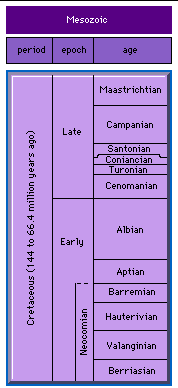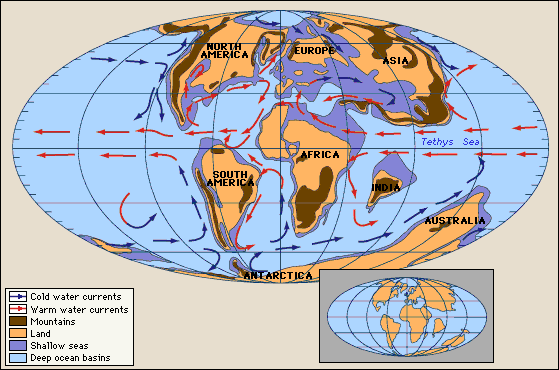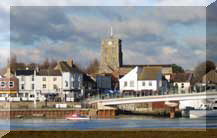ELECTRONIC
NEWS
BULLETIN
FOR
THE
| News & Events |
| Wildlife Reports |
| Word of the Month |
| Historical Snippet |
| Advertisements |
If
you wish to receive a regular monthly Bulletin, please ask by EMail, with
your full name.
Glaucus@hotmail.com |
| Web Sites |
|
|
Shoreham-by-Sea and District, West Sussex, England
November 1999 : Volume 1 Issue 4
- News
& Events
Grand
Prix Formula 1: If an Adur Bath Tub was 10 mm too wide, would
it be disqualified?
Wildlife Reports
The
Labour party announce at the Bournemouth Conference that the South Downs
are to become a National Park. 14 of the 15 Councils in Sussex are
opposed. The exception are the proponents Brighton Council. The FOE are
actively in favour and groups like the National Trust and the Society of
Sussex Downsmen have expressed their support. The Sussex Conservation Board,
which would be replaced, are opposed. A few working environmentalists I
have met said that it would not make much difference, except that:
1)
planning applications on the Downs would be more difficult.
2)
more money would be available for conservation projects etc.
The
Shoreham Herald has invited comments from its readers in a full page display.
The Downs
Oh!
the downs high to the cool sky;
And
the feel of the sun-warmed moss;
And
each cardoon, like a full moon,
Fairy-spun
of the thistle floss;
And
the beech grove, and a wood dove,
And
the trail where the shepherds pass;
And
the lark's song, and the wind song,
And
the scent of the parching grass!
John Galsworthy (1867-1933)
Sounds like sentimental slop to me, and I am not sure what cardoon means in this context?
The
summits on the downs are clay soil containing flints. I am not sure if
this because cultivation eroded the clay on the other parts of the Downs,
or if this was the composition laid down millions of year ago. The clay
provides the conditions where beech trees can be planted and grow, e.g.
Sompting Clump.
Adur
Valley Wildlife
Geology
of Sussex
Birdwatchers will be protesting
on a French nature reserve on Sunday against the shooting of birds - many
of which migrate to Britain.
They are unhappy about
a French decision to prolong the hunting season by two months.
Conservation groups from
throughout Europe also accuse the French government of ignoring laws protecting
wildlife and allowing hunters to take over part of the Platier d'Oye reserve
near Calais.
The birds most at risk
include Redshank, Curlew, Oystercatcher and Lapwing, all of which would
otherwise migrate to Britain. (Redshank, Oystercatcher
and Lapwing all inhabit the RSPB reserve on the River Adur).
The Royal Society for
the Protection of Birds and the Worldwide Fund for Nature support French
bird conservation groups in a campaign to reverse last year's extension
by France of the shooting season.
It starts a month earlier
than before, in mid-July and ends a month later at the end of February.
Conservationists say that
means birds can legally be shot during part of the summer breeding season,
and the winter migrating season.
An online petition against the hunting is at http://www.rspb.co.uk
Words of the Month
Paludal: | pljud()l, -lu-, paljd()l, -l- | a. E19. [f. L palud-, palus marsh + -AL1.] (Of a plant) growing in marshy ground, requiring a marshy habitat; Med. malarial; gen. marshy.paludine | paljdn, -dLn; -l- | a. of or pertaining to a marsh, marshy M19.
Cardoon |
kdun | n. E17. [Fr. cardon, f. carde edible part of the artichoke,
f. mod.Prov. cardo f. Proto-Romance f. L cardu(u)s thistle, artichoke:
see -OON.]
A plant of the composite
family, Cynara cardunculus, resembling a thistle and related to
the globe artichoke; the fleshy inner leaf-stalks of this plant, eaten
as a vegetable.
This
plant is native to southern Europe and is not found on the South Downs,
and probably would not grow there unless cultivated with great care.
It
is conceivable that cardoon was used as a general name for a thistle, but
I have not been able to find a reference to this in Victorian texts. It
is unlikely because of the use of the thistle as an emblem for centuries
before. Is it used in the poem because it conveniently rhymes with moon?
Or is it part of the thistle?
AH
Parch
| pt | n. rare exc. in comb. LME. [f. next.] The action of parching;
the condition of being parched.
Comb.:
parch mark Archaeol. a localized discoloration of the ground in dry weather
over buried remains.
Parch
(Chambers) to make hot and very dry. (ety: unknown)
Parch
is found in the Bible, Shakespeare, Milton, Keats.
----------------------------------------------------------------------------------------------------
Excerpted from The Oxford
Interactive Encyclopedia*
Developed by The Learning
Company, Inc. Copyright (c) 1997 TLC Properties Inc. (unless
indicated in blue)
November 1999: Computer Shopper has the Oxford Reference Shelf (not the above reference) which is probably worth its money (£2.45) for the Metric Conversion on its own. The standard dictionary is the Pocket Oxford (Smaller than the Shorter Oxford*). Essential because of the Americanisation of word processor spell-checkers, and especially if you have to put on special reading spectacles to see a printed word dictionary. French, Italian and Spanish. Greek and Latin absent. Can anybody recommend an electronic dictionary for the last two, and Old English/Saxon?
The Oxford Interactive Encyclopedia* is now available with the first issue of Computer Success Plus (in newsagents) at £1.99.
Historical Snippets
Cretaceous Period (from the Latin, creta 'chalk'), the last geological
period of the Mesozoic Era, spanning the period of time from some 144 to
66.4 million years ago. The climate was warm and the sea-level rose, and
by the middle of the period marine transgression
was widespread (this is not what caused the combes and valleys in the Downs
though).
The Cretaceous saw the emergence of the first flowering plants and
the dominance of dinosaurs, although these died out before the end of the
Mesozoic Era.
 Mesozoic
Era
Mesozoic
Era
Continents:

Distribution of landmasses, mountainous regions, shallow seas, and deep ocean basins during the Late Jurassic.
Included in the paleographic reconstruction are cold and warm ocean currents. The present-day coastlines and tectonic boundaries of the configured continents are shown in the inset.
At the onset there existed the two supercontinents of Gondwana
and Laurasia, which were barely attached at the junction of North and South
America. When these enormous landmasses divided, the South Atlantic Ocean,
Indian Ocean, Gulf of Mexico, and Caribbean came into being. By the end
of the Cretaceous, the present-day continents were separate entities except
for Australia, which was still joined to Antarctica. Also, India had not
yet fused to Asia. The positions of the various continents were very
nearly those shown in the map below for the Maastrichtian shortly before
the close of the Cretaceous.

- LOCAL ORGANISATIONS
- Alchemist
- (Material Resources for Adur District Voluntary & Educational Programmes)
- British Marine Life Study Society
- Marlipins Museum (Sussex Archaeological Society)
- Sussex Japan Society
- Sussex Yacht Club
- SPECIALIST SITES
- An Outline History of the Radar and Radio Installations
- Ray Chandler
- Andy Horton
- Andy Horton (Hulkesmouth Publishing)
- Keith Irving
- Tony Irving
Distribution of landmasses, mountainous regions, shallow seas, and deep ocean basins during Late Cretaceous time (Maastrichtian Age).
Included in the paleogeographic reconstruction are cold and warm ocean currents. The present-day coastlines and tectonic boundaries of the configured continents are shown in the inset at the lower right.
Adapted from C.R. Scotese, The University of Texas at Arlington
Note the first appearance of the Gulf Stream AH
Position of Sussex:
In the Jurassic, Sussex was roughly at the latitude in which Rome is today. The continent moved northwards in the intervening period. If this was at a steady rate, the position of Sussex would be about midday between Rome and its present position.
Sea level was higher during most of the Cretaceous than at any other time in Earth history. In general, the world oceans were about 100 to 200 metres higher in the Early Cretaceous and roughly 200 to 250 metres higher in the Late Cretaceous than at present. The high Cretaceous sea level is thought to have been primarily the result of water in the ocean basins being displaced by the enlargement of the mid-oceanic ridges.
Eustasy | justsi | n. M20. [Back-form. f. next, after mod.L -stasis corresp. to -static: see -Y3.] Geogr. A uniform worldwide change of sea level
80
million years ago, Cretaceous Period
(144 - 66.4 million years ago): Sussex is covered by a warm sea inhabited
by ammonites, Micraster and other urchins, molluscs, at a lower
latitude (Continental Drift: Tectonic Plate Theory). Sedimentary deposits
of foraminiferans such as Globigerina and coccoliths (microscopic
plankton with a calcium carbonate shell) lay down the chalk which
is rock of the South Downs near Shoreham.
Fossil
bivalve Spondylus spinosa (pic).
Chalks and limestones, for example, were deposited
during the early Late Cretaceous (e.g. Santonian
age), when sea levels were at their highest.
Chalk deposition in eastern England was from
Cenomanian to Maastrichtian time.
Cretaceous Seas:

Ichthyosaurs in the early Cretaceous are replaced by mosasaurs (giant
aquatic lizards that ate ammonites etc.). Also pliosaurs, plesiosaurs and
long-necked elasmosaurs
giant turtles, pterosaurs: flying reptiles.
The Archaeopteryx flew over land.
Ends K-T event K=kreta (Gk) Cretaceous-Tertiary
boundary event.
The mass extinction of the dinosaurs and life
in the sea at the end of the Cretaceous period, the placental mammals evolved
to become the dominant animals on Planet Earth
Brief
History of Shoreham-by-Sea
Geology
of Sussex
Web Sites
Shoreham Lifeboat Station
Shoreham Airport Society
Shoreham Rowing Club
Shoreham Sailing Club
at Truleigh Hill
bySqn Ldr T Howard ToonBA CertEd MBCS CISP RAFVR(T)
Taking the lead with Gill Minter (for Dog Lovers)
FAMILY
AND PERSONAL HOMEPAGES
David Lewis
Havergal
Brian Society http://www.musicweb.force9.co.uk/music/brian
Brian,
Havergal,
Free Advertisements
Normal advertisement rules
apply.
Submissions accepted by
EMail only.



